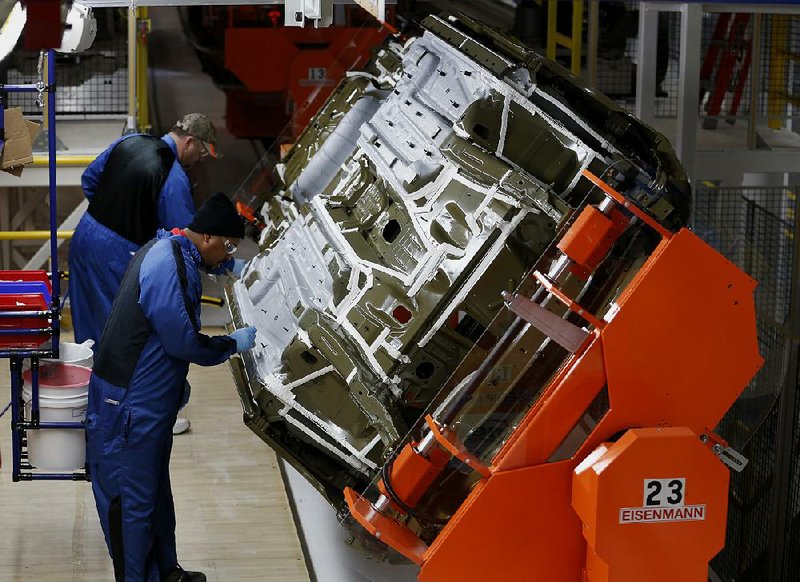WASHINGTON - U.S. factory output rebounded strongly in February after harsh winter storms caused a steep drop-off in production in January. Manufacturers produced more autos, home electronics and chemicals.
The Federal Reserve said Monday that factory production surged 0.8 percent, nearly reversing a 0.9 percent plunge in January because of harsh winter weather. February’s gain was the largest in six months.
“Once the weather effects have rolled off, underlying demand is better than expected,” said Gennadiy Goldberg, a strategist at TD Securities USA LLC in New York. “The market got a little too pessimistic.”
Monday’s figures suggest that factories are poised to increase output and drive more economic growth as the weather improves.
“Assuming that the weather returns to seasonal norms, output will rise rapidly in the coming months,” Paul Dales, an economist at Capital Economics, said in a note to clients.
Overall industrial production, which includes manufacturing, mining and utilities, rose 0.6 percent in February, the biggest increase since September. Industrial production had fallen 0.2 percent in January.
Utility output dipped 0.2 percent despite the cold weather. The drop came after a sharp 3.8 percent jump in January. Mining production rose 0.3 percent.
Auto production rose 4.6 percent after falling 5.1 percent in January. Home electronic output increased 0.7 percent. And food production rose about 1 percent.
Automakers are turning to discounts to help move inventory as dealerships dig out from heavy snow. At Ford Motor Co., February sales fell 6 percent from the same period a year ago. The company had to delay approximately 10,000 fleet orders because of parts disruptions, said John Felice, Ford’s vice president of U.S. marketing.
Dealerships that weren’t affected by snow reported robust demand, Felice said on a March 3 revenue call.
“It has been an interesting start to the year with weather,” Felice said. “We feel that as we head into March, we’ll be in very good shape.”
Factories ran at 76.4 percent of capacity, up one-half of a percentage point over the preceding month and 2.3 percentage points below the long-run average.
Manufacturing and the broader economy may be emerging from a winter slump. A rebound in factory output could drive faster growth in the coming months.
A private survey this month found that manufacturers received more orders in February even as production fell. The Institute for Supply Management, a trade group of purchasing managers, said its overall index of manufacturing activity rose to 53.2 in February from 51.3 in January.
And Americans spent a bit more at retail stores in February after pulling back in December and January. That may mean that consumer demand is picking up, which could lead to more factory output.
But some other data have been negative. A government report showed that factory orders dipped in January. Auto sales have slowed after a big gain in 2013. Sales were flat in February after a drop in January.
Businesses kept up their restocking of store shelves and warehouses in January even as sales fell. That means retailers and other firms could be stuck with some unwanted goods. Rising inventories could weigh on factory production in coming months if companies cut back on orders.
The economy will grow at about a 2 percent annual rate in the first three months of this year, economists forecast, down from more than 3 percent in the final six months of last year. But most expect it will pick up later this year to a 3 percent annual pace.
Information for this article was contributed by Lorraine Woellert of Bloomberg News.
Business, Pages 23 on 03/18/2014
